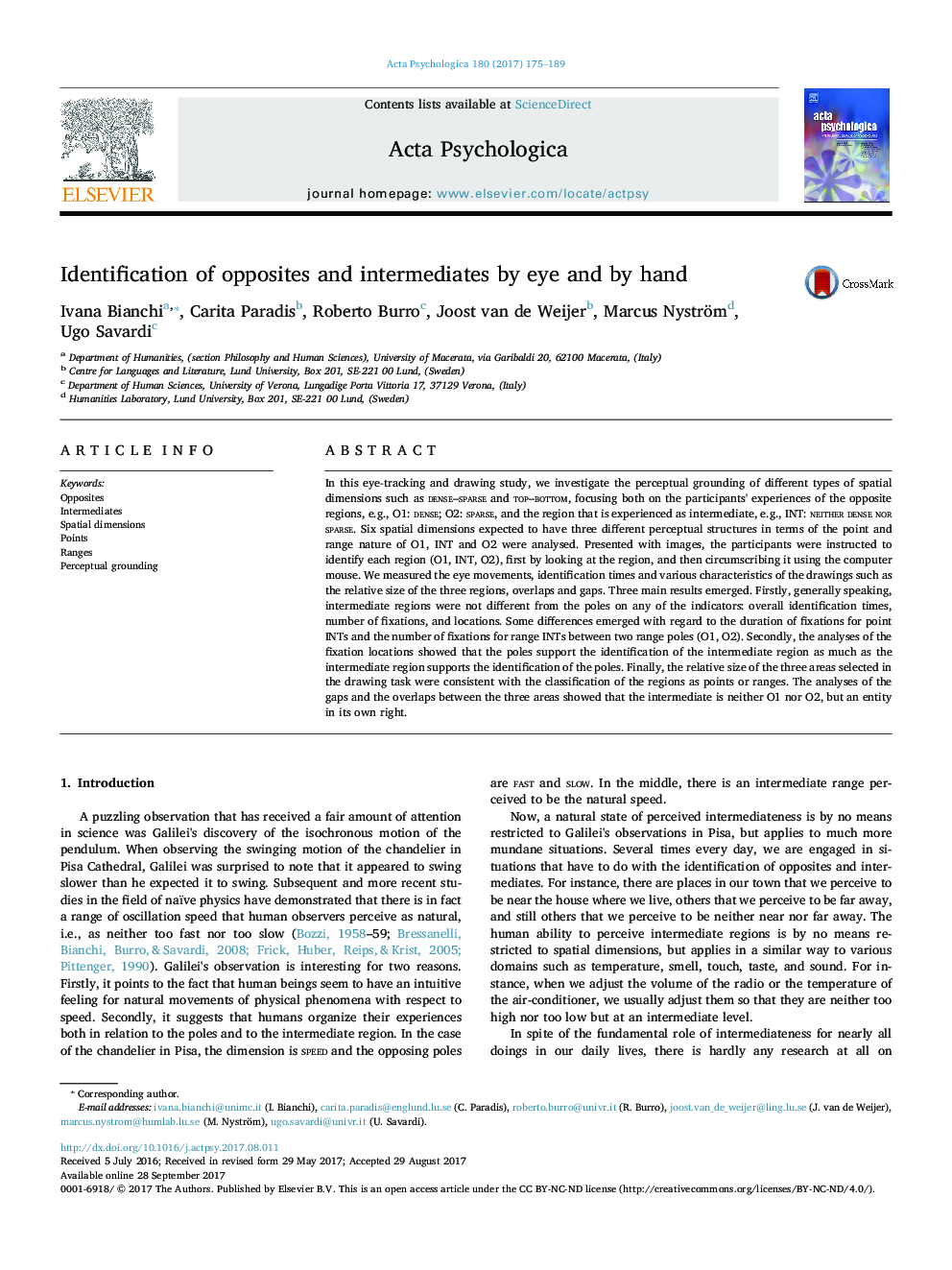| کد مقاله | کد نشریه | سال انتشار | مقاله انگلیسی | نسخه تمام متن |
|---|---|---|---|---|
| 5040196 | 1473578 | 2017 | 15 صفحه PDF | دانلود رایگان |
- Participants map poles and intermediates onto different parts of the images.
- Intermediateness is not a mixture of the two poles.
- Fixations and time for identification are similar for poles and intermediates.
- Intermediates support visual identification of the poles as much as vice versa.
In this eye-tracking and drawing study, we investigate the perceptual grounding of different types of spatial dimensions such as dense-sparse and top-bottom, focusing both on the participants' experiences of the opposite regions, e.g., O1: dense; O2: sparse, and the region that is experienced as intermediate, e.g., INT: neither dense nor sparse. Six spatial dimensions expected to have three different perceptual structures in terms of the point and range nature of O1, INT and O2 were analysed. Presented with images, the participants were instructed to identify each region (O1, INT, O2), first by looking at the region, and then circumscribing it using the computer mouse. We measured the eye movements, identification times and various characteristics of the drawings such as the relative size of the three regions, overlaps and gaps. Three main results emerged. Firstly, generally speaking, intermediate regions were not different from the poles on any of the indicators: overall identification times, number of fixations, and locations. Some differences emerged with regard to the duration of fixations for point INTs and the number of fixations for range INTs between two range poles (O1, O2). Secondly, the analyses of the fixation locations showed that the poles support the identification of the intermediate region as much as the intermediate region supports the identification of the poles. Finally, the relative size of the three areas selected in the drawing task were consistent with the classification of the regions as points or ranges. The analyses of the gaps and the overlaps between the three areas showed that the intermediate is neither O1 nor O2, but an entity in its own right.
Journal: Acta Psychologica - Volume 180, October 2017, Pages 175-189
